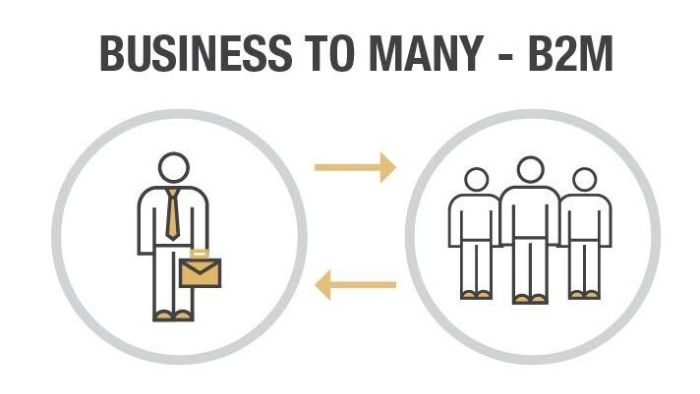What is B2M eCommerce? The Many Benefits & Limitations
What is B2M eCommerce? Is it better than traditional ecommerce models such as B2B & B2C? Our article will cover most of your questions with satisfactory answers.
What is B2M?

B2M (Business-to-Many) refers to a business that sells goods to all types of available customers and consumers, including wholesalers, retailers, manufacturers, distributors, etc.
The Differences between B2M, B2C & B2M
The main difference between B2M and B2C and B2B is the customers. As mentioned above, B2M is entirely different in terms of the target audience from B2B or B2C. B2B businesses only target wholesalers, while B2C companies only target retailers.
B2M business in ecommerce means that businesses are ready to sell products to everyone who wants to buy products, whether consumers or wholesalers on the online market through multi-channels such as websites, e-marketplace, etc.
However, you should also understand that while B2M is willing to sell to a wide range of customers, there is a big difference in the strategy of selling to different audiences. Most ecommerce B2M marketing companies have a group of customers they are most interested in and the most profitable.
The Benefits of B2M eCommerce

B2C businesses often have a large base of customers with many competitive opportunities and the ability to increase gross profit in a short time with low conversion costs.
On the contrary, despite the high conversion costs, B2B customers often have absolute brand loyalty, demonstrated by long-term contracts and agreements, providing high value-for-money in the long run. With wholesalers’ characteristics, B2B businesses often develop more stably thanks to long-term sustainable income for the company.
With a large and diverse customer base that includes both B2B and B2C customers, B2M businesses benefit from the characteristics of both groups of customers, have many opportunities for brand development across multiple channels and receive more ability to increase profits.
The Limitations of B2M eCommerce

However, because of the large customer base, B2M businesses also face more obstacles. B2M businesses have a broader target audience with a more diverse group of customers. Because of this feature, their marketing strategies must be more diverse and attractive than regular B2B or B2C businesses to achieve the ability to engage all of their customers.
In addition, the production costs and workloads of a B2M firm tend to be higher than for a typical B2B or B2C business. Because consumers are unlikely to bring stable long-term revenue, B2B businesses have to pay more for B2C marketing costs through advertising and promotion programs.
On the other hand, by targeting B2B customers, at the same time, B2M businesses will have to contact and approach wholesalers proactively, suppliers and distributors to agree on product pricing and adjustments. This can dramatically increase the conversion cost of each B2M customer audience.
Optimization Tips for Better B2M eCommerce

In general, a B2M website is quite similar to a B2B2C website because it targets both wholesalers and retailers. Because of their similarities, the following tips can also apply to the B2B2C ecommerce website:
- Restrict access
Restrict access to pages targeting a specific audience. For example, for a product page with pricing and content targeted to B2B customers, restrict access to B2C customers. As a result, you can implement a pricing diversification strategy by customer group.
- Tailor your CTAs
A B2M website needs appropriate call-to-actions such as banners, buttons, instructions and accompanying content to lead B2B and B2C customers to the respective pages.
- Clear deviations
Even though the website caters to both businesses and consumers, you should still partition in general content sections like the homepage and address it with each customer group’s needs.
Start Building Your Successful B2B Website Now! Fill the form, and our sales reps will contact you to arrange a consultation. |



